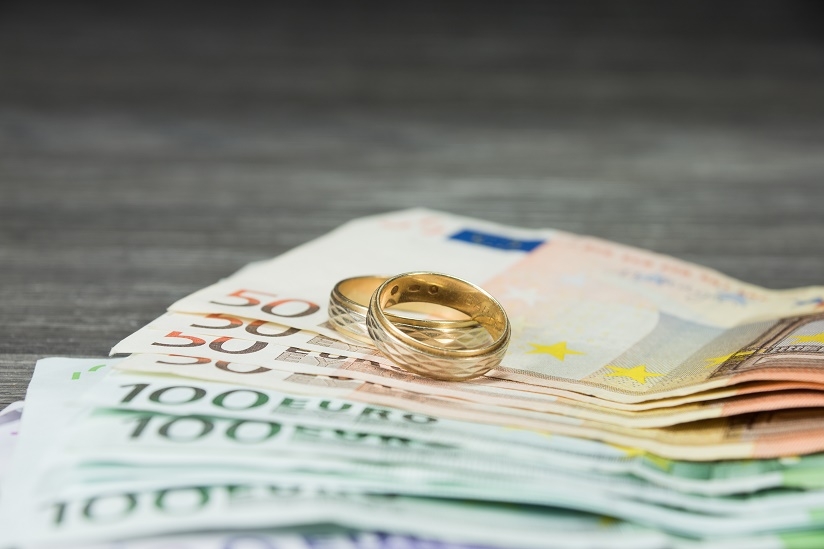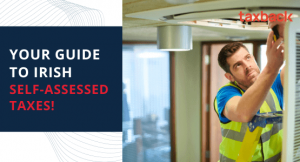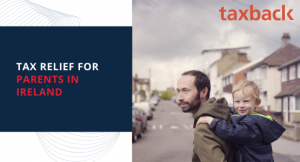Marriage and Tax: Should I Put a Ring on it?
Curious about the financial perks of marriage? We'll explore whether tying the knot makes 'tax sense' and how it could potentially lead to significant tax back.
Dum dum da dum.
Dum dum da dum.
Did you know that there are more than 1.7 million married people in Ireland? When you think about it – that's A LOT of 'I dos', hotels booked and cakes cut!
If you're considering marriage for financial reasons, it's essential to explore how you can get tax back.
There is a common perception that getting married can benefit both partners financially by reducing their tax bills. But is this really the case?
The truth is that, while some couples can make a saving, a lot of married couples are no better off tax-wise than they were when they were single - particularly when it comes to take-home pay and the possibility of getting tax back.
It all comes down to how much a working couple earns.

How does being married affect my taxation in Ireland?
There are a few different scenarios in which your taxation has affected my marriage in Ireland.
In a nutshell, you can potentially make a saving if:
- Both you and your spouse are working but only one of you pays tax at the higher rate
- Both you are your spouse are working and one spouse has unused credits due to low income
- Only one spouse is working
- One spouse cares for children in the home
- You are disposing of assets or making investments
Let's take a closer look at where savings can be made.
The average Irish tax refund is €1,880
How does the year of marriage affect my taxes?
First things first.
In the year you're married, both you and your spouse will continue to be treated as single people for tax purposes.
However, if the tax you pay as two single people is greater than the tax payable if you were taxed as a married couple, you can claim the difference as a tax rebate. Note: only tax deducted in the months after marriage can qualify for a tax refund.
Refunds are typically granted the following year – so if you get married in 2024 for example, your refund will be calculated after December 31st, 2024.
Using a tax back calculator can help determine the difference between taxes paid as single individuals and potential savings as a married couple.

The following years
For the years following your marriage, there are three tax assessment options to choose from:
(1) Assessment as a single person
Under this option, each spouse is treated as a single person for tax reasons.
In other words both spouses:
- are taxed on their own income
- get tax credits and the same standard rate cut-off point due to a single person
- pay their own tax
- complete their own tax return and claim their own tax credits. One partner can't claim relief for payments made by the other. There is no right to transfer tax credits or standard rate cut-off points to each other.
(2) Separate assessment
The main difference between this option and assessment as a single person is that under this option, some tax credits can be divided equally between both partners. These tax credits are:
- Married Tax Credit
- Age Tax Credit
- Blind Person's Tax Credit
- Incapacitated Child Tax Credit
The balance of the tax credits is given to each partner in proportion to the relevant cost. The Employee Tax Credit (the PAYE tax credit) and any expenses are allocated to the appropriate spouse. Any tax credits other than the Employee Tax Credit and employment expenses that are unused by one partner can be claimed by the other spouse.
Any tax credits that are unused (other than the Employee Tax Credit and employment expenses) and the standard rate cut-off point up to €42,000 in 2024 (more on this below) can be transferred to the other spouse at the end of the tax year.

(3) Joint assessment
The joint assessment option is usually the most favourable basis of assessment for a married couple or civil partners.
This option is automatically given by the tax office when you advise them of your marriage, but you can choose to opt for either of the previous options.
Under this option, the tax credits and standard rate cut-off point can be allocated between spouses to suit your own circumstances.
Explore the option that gives you the best chance to get tax back by using a joint assessment or tax back calculator.
You can read more about these here in our BS free Guide to PAYE tax!
The average Irish tax refund is €1,880
Is there a real tax benefit to getting married? Let's look at the numbers
Cut-off point
First, we need to establish the standard rate cut-off points for 2024.
Under the standard rate tax band, you pay 20% tax on income up to the standard rate cut-off - but once you earn more than that - the balance is taxed at 40% (the higher tax rate).
Table: 2024 standard rate cut-off points
| Single Person | €42,000 |
| Married couple (one income) | €51,000 |
| Married couple (two incomes) | Up to €84,000 |
| One parent family | €46,000 |
Savings
Tax savings can only be made in certain circumstances.
Explore where potential savings can be made after marriage. Ensure you're not missing out on tax back opportunities.
When both spouses are working, a married couple can earn up to €84,000 in 2024 before the higher rate of tax kicks in. So if each spouse is working and earning €42,000 or more, each is already taking full advantage of the standard-rate tax band – in other words, no tax saving is available.
Furthermore, when you both work and earn less than €42,000 each, you won't be any better off when it comes to tax. This is because the main way to save income tax as a working married couple is to reduce the amount of income which is taxed at a higher rate. But, if neither of you is paying tax at the higher rate, there will be no incentive to share any unused standard rate tax band.
Make sense? Good!
Now let's look at where potential savings can be made.
The average Irish tax refund is €1,880

Case study one: Investments
Capital Gains Tax (CGT - a tax charged on profit made on the disposal of an asset) is usually charged at a rate of 33%. However, this does not apply to transfers between spouses. No Stamp Duty is paid on transfers of shares between spouses also.
What's more, investment losses can be shared between spouses. This means that if one spouse makes a loss on an investment, they can use this loss to offset against CGT charged on an investment from the other spouse.
Case study two: standard rate of tax
Some married couples can make a saving on the amount of income tax that they pay.
For example – John has an annual income of €44,300 in 2023. As a single individual, he would be due to pay €7,360 in tax. Jennifer has an annual income of €26,300 in 2023 and as a single individual, she would be due to pay €1,960 in tax. However, as a married couple, John and Jennifer's combined tax liability would be €7,520.
This effectively results in an annual tax saving of €1,800 for the couple.

Case study three: one spouse is employed
Savings can potentially also be made if only one of you works.
For instance – Mary earns €50,000 in 2023 and pays €9,640 in tax. Her partner Martin does not have an income. When they get married their tax liability would be reduced to €6,190. In other words, they can make a saving of €3,450 in tax each year.
Case study four: caring for a child
Unmarried parents potentially miss out on the Home Carer Tax Credit. This credit (worth €1,800 in 2024) is given to married couples (jointly assessed) where one person looks after a child in the home. The parent who is caring for the child must not earn more than €7,200 a year. A reduced tax credit can be granted if the carer's income is between €7,200 and €10,800. If you earn €10,800 or more in 2024, you are not eligible for this tax credit.

Marriage and tax FAQ
Q: Can a married couple continue to be taxed individually after they marry?
A: Yes, a married couple can choose to be taxed separately and file separate Irish tax returns if required.
Q: Can a married couple split their tax credits?
A: Yes, when you are married you can choose to have your tax relief and credits split between you and your spouse.
Note: employment expenses and PAYE tax credits can't be transferred.
Q: Does a married couple have to notify Revenue by a certain date after they get married?
A: If you choose to be jointly assessed, you must notify Revenue by 31st March in the year following your marriage.
Q: How can my spouse and I change our taxation status?
A: When you get married you should advise the tax office of your date of marriage (via an IT2 form). You will also need to quote both your spouse's and your own PPS number.

Q: Will I get one tax credit certificate or will Revenue issue two separate certificates?
A: If both you and your spouse are working you will be issued two tax certificates.
The average Irish tax refund is €1,880
Q: What is an assessable spouse?
A: An assessable spouse is responsible for filing tax returns and paying any tax due. With joint assessment, you can choose which of you is to be the assessable person.
If you don't choose an assessable person, the spouse with the highest income for the latest year for which the income of both people is known will automatically be nominated.
This person continues to be the assessable person until you jointly elect to nominate the other person or until either of you opts for either a separate assessment or assessment as a single person.
Once an assessable spouse is nominated you can ask for tax credits and standard rate cut-off points to be allocated between you in whatever way you wish.
If your tax office does not get a request from you to allocate your tax credits in any particular way, they will normally give all the tax credits (other than the other partner's Employee and expense tax credits) to the assessable spouse.
Q: How does marriage affect tax where one partner is self-employed?
A: If one spouse is self-employed, joint assessment can still apply. The flexibility this option brings can be very convenient - especially if one of you pays tax under the PAYE system and the other pays tax under the self-assessment system.
Under joint assessment, you let your circumstances determine if most of the tax should be paid under PAYE or in a lump sum on assessment.
This is determined by the way in which the tax credits are allocated. If you choose to pay most of your tax under PAYE, the tax credits (apart from the Employee Tax Credit and employment expenses), should be offset against the self-assessment income.




